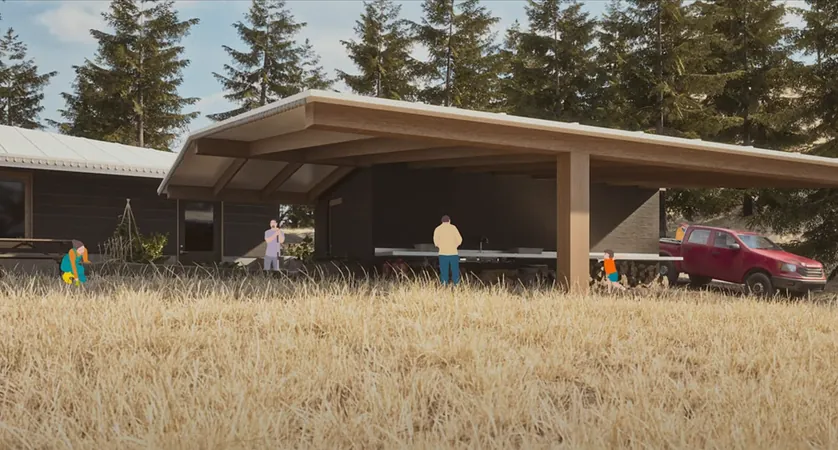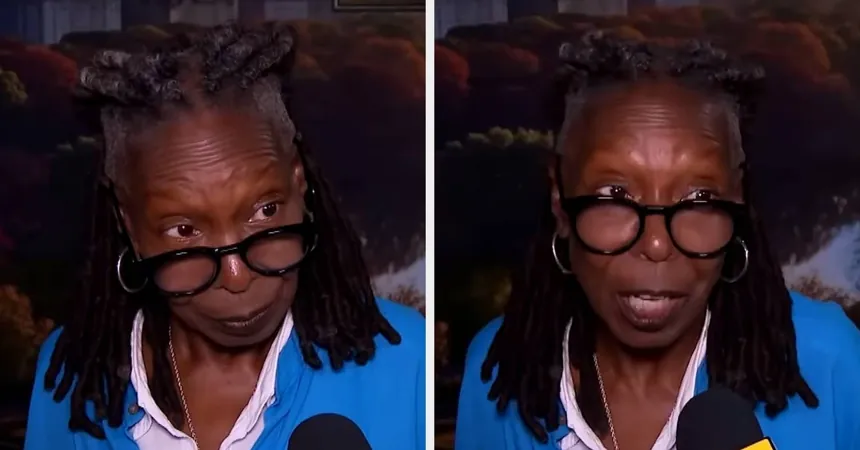
How to Build a Wildfire-Resistant Home: A Vision for B.C. Communities
2025-09-16
Author: Emma
A Dream Born from Devastation
In the aftermath of the devastating 2017 wildfires in the Yunesit’in community, Russell Myers Ross has embarked on a mission that could redefine home building in fire-prone areas. As the elected chief during the catastrophe, he envisions a fire-resistant house designed to withstand the brutal impacts of climate change. With a light-hearted spirit, he quips, "We could make this good enough to have a grandmother stay in here and live through the apocalypse."
Innovative Designs to Fight Fire
The Yunesit’in community, part of the Tsilhqot’in Nation, was significantly affected during the wildfire season, prompting Ross to create a thoughtful housing solution. The innovative design includes a reflective metal roof to repel heat, strategically placed gravel around the house, and sprinkler systems targeting the walls—all utilizing accessible technologies suited for B.C.'s hot, dry climate. Ross aims for a structure constructed from premium materials, blending traditional Yunesit’in pit house designs with modern fire-resistant features.
Moving Beyond Substandard Housing
"We should build houses that are better than the ‘INAC shacks,’" says Ross, referring to the subpar housing historically provided by the Indian Act. With insights from professor John Bass of the University of British Columbia, things began taking shape in 2018 post-fires, and a prototype is now in progress, aiming to resonate with community needs.
Cultural and Practical Considerations
The community’s feedback highlights pressing issues: overcrowded homes, energy costs, and health risks from mold and smoke. Their vision extends beyond mere walls, incorporating communal spaces for processing meat and traditional outdoor activities. This reflects the Tsilhqot’in way of life, emphasizing the importance of food preparation and social gatherings outdoors.
Sustainable and Resilient Features
The house design embraces sustainability with features like heat pumps for cooling, solar panels for energy efficiency, and advanced air filtration systems. Utilizing charred wood for walls strikes a balance between cultural preference and fire safety—a decision that reflects the community's desire to harness local resources responsibly.
Partnerships for a Brighter Future
This endeavor aligns with a broader trend among B.C. First Nations, who are forming partnerships for culturally reflective housing solutions. Collaborative projects, such as those with the Heiltsuk Nation and Cowichan Tribes, are paving pathways to sustainable communities equipped to handle climate challenges.
Funding: The Major Hurdle Ahead
Despite the promising designs and community support, funding remains the biggest barrier to construction. With soaring construction costs exacerbated by the COVID-19 pandemic, securing financial backing from government, foundations, and private donors is crucial for moving this vision forward. Ross is not just focused on building houses; he envisions a thriving local economy where community members can be trained and hired to sustain these developments.
A Vision for Collective Resilience
Ross dreams of a circular economy that builds capacity within the community, ultimately aspiring to support surrounding areas as well. By creating high-quality, culturally aligned homes, he hopes to construct more than houses; he aims to build resilience against future disasters.









 Brasil (PT)
Brasil (PT)
 Canada (EN)
Canada (EN)
 Chile (ES)
Chile (ES)
 Česko (CS)
Česko (CS)
 대한민국 (KO)
대한민국 (KO)
 España (ES)
España (ES)
 France (FR)
France (FR)
 Hong Kong (EN)
Hong Kong (EN)
 Italia (IT)
Italia (IT)
 日本 (JA)
日本 (JA)
 Magyarország (HU)
Magyarország (HU)
 Norge (NO)
Norge (NO)
 Polska (PL)
Polska (PL)
 Schweiz (DE)
Schweiz (DE)
 Singapore (EN)
Singapore (EN)
 Sverige (SV)
Sverige (SV)
 Suomi (FI)
Suomi (FI)
 Türkiye (TR)
Türkiye (TR)
 الإمارات العربية المتحدة (AR)
الإمارات العربية المتحدة (AR)